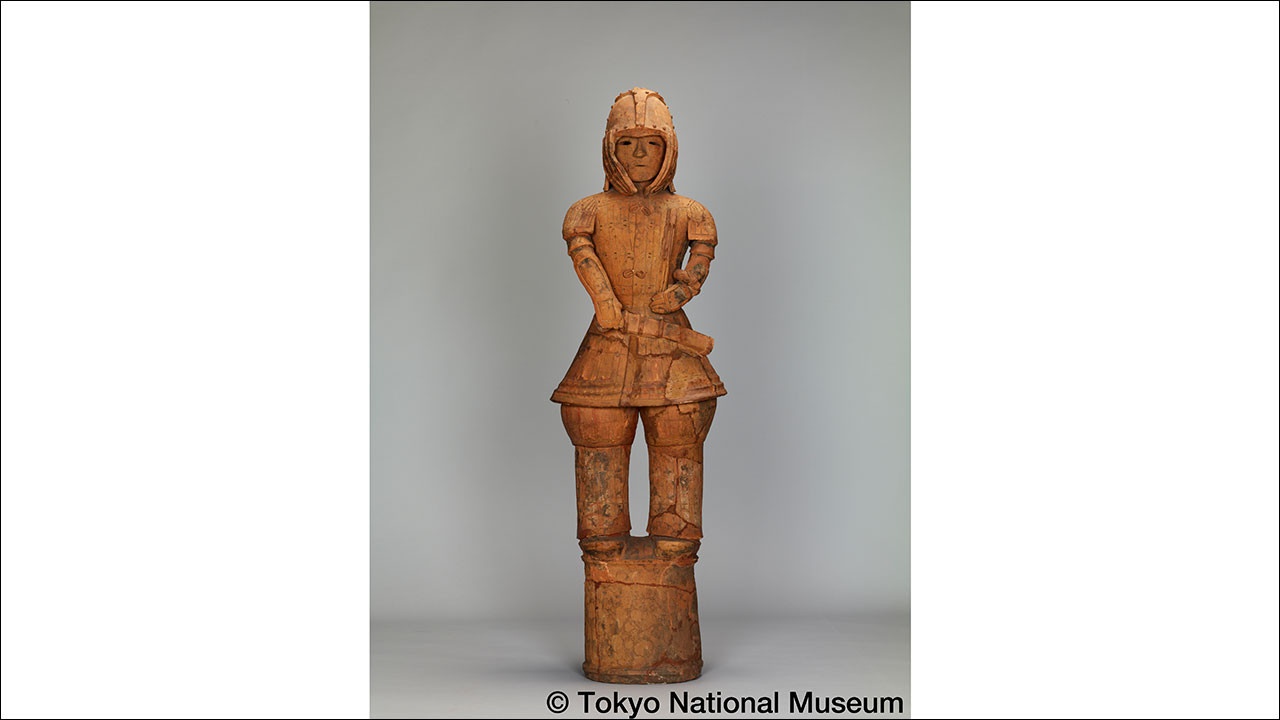Haniwa (Terracotta Tomb Figurine), Warrior in Keiko Armor
(Haniwa, Keiko no bujin)
Haniwa are terracotta figurines, reddish brown in colour and hollow. They are excavated from the burial mounds of powerful local lords which were built in Japan from the third century to the end of the sixth century AD. Haniwa figurines were made in various shapes from houses to people and were arranged in rows on either the top or around the edge of the burial mounds. “Warrior in Keiko Armor” is thought to date from around the sixth century. It was unearthed in Gunma Prefecture in eastern Japan. The armor and weapons are sculpted in detail and we can see how warriors in those times dressed. Of all the many Haniwa, this is the only one that was designated national treasure. Its image has appeared on postage stamps and as a model for the heroes of cartoons and films. Why did the ancient Japanese make Haniwa and place them on burial mounds? Who was the Warrior in Keiko Armor? We will look into the story of the haniwa warrior that continues to entrance the Japanese people today.
